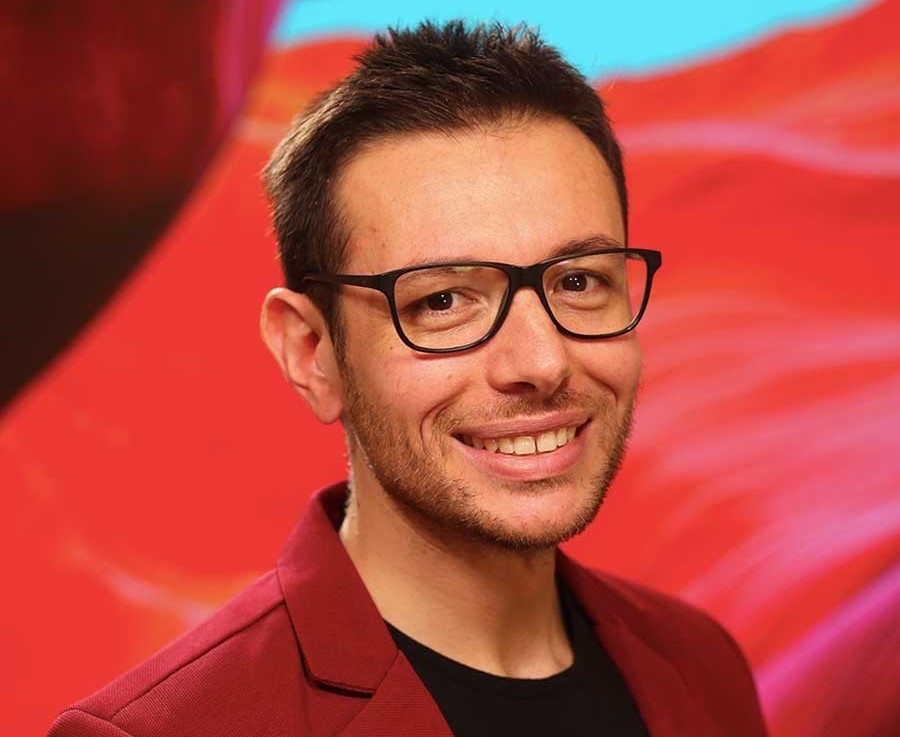First Facebook, now TikTok: how Geopop built a 7 million-strong community with science explainers

This interview was first published by Italian journalist Francesco Zaffarano in his biweekly Substack newsletter, Mapping journalism on social platforms. The original is available at this link. Sign up for the newsletter here.
Geopop is an Italian social media-born cross-platform outlet that produces video explainers about science and its relationship with our daily life. The project was started as a hobby by geologist Andrea Moccia in 2018 and expanded into a joint venture with publisher Ciaopeople Media Group in 2020. Geopop has grown quickly since then, and now has 1.6 million followers on TikTok.
Its portfolio of videos includes an 11-minute explainer with 3D simulations to show what could happen to Naples when (and not if) Mount Vesuvius erupts again; how and why Genoa’s Morandi Bridge collapsed in 2018, causing the death of 43 people and displacement of 566 people; but also features more light-hearted topics including how to open a bottle of wine with a lighter.
You can read more about Geopop in our recent report on how publishers are learning to use TikTok to reach younger audiences.
I spoke to Andrea Moccia about how the project began, how the team develops their ideas into videos and how they relate to their audience.
Q. How did Geopop start?
A. As a joke. It was 2018, and I was talking with my friend at a bar, and they told me I am good at explaining scientific facts to people who know nothing about [science]. A friend of mine suggested I start a YouTube channel to explain geology. I am a geologist, and at the time, I spent a lot of time explaining science to my clients every day, but I never thought someone could be interested in that. But I decided to buy a camera and a microphone and gave it a go. I started on Facebook, and a few months after, I started the YouTube channel.
The community around my videos started to grow quickly and then Ciaopeople, one of the biggest digital media organizations in Italy, knocked at my door. And after 11 years of working as a geologist, I switched and started working in the media industry.
Q. How big is your audience across the various platforms today?
A. We are close to 7 million people cross-platform. Facebook alone accounts for 2.5 million. But in the past year, we also grew by 800k subscribers to the YouTube channel, where we now have over 1.2 million subscribers. As far as I understand, our YouTube channel was the single channel in Italy that experienced the biggest growth in 2022.
What I am very proud of is that our style of explaining complicated things in an accessible way is working almost on all platforms. For example, on TikTok, which is the antithesis of YouTube. But we decided not to care about sticking to the short form on TikTok, and we are getting very great results there too.
Q. Can you describe your role today in Geopop?
A. Since Ciaopeople acquired Geopop, I became the head of editorial content, as well as being founder and partner. But on a daily basis, I take care of almost everything, from business development to talent management.
And speaking of talent management, one thing that is happening is that Ciaopeople is now working on my talent management because we are receiving more and more requests for conferences and other things where they want me to participate as a guest or an expert.
Q. Speaking of roles, how many people work at Geopop?
A. There are nine employees, and one more person will join soon. But we are already recruiting for more roles.
The team is divided between authors/talents, those who write the scripts and then act as hosts in the videos, and the videomakers who take care of the production. We also have one person dedicated to social media management here in Milan, plus some extra resources for SMM in Ciaopeople’s headquarters in Naples.
Q. Who is your average follower? How is your community changed over time?
A. Geopop followers are people who crave knowledge. We have a very loyal community, and even now that we have 6 million people who follow us, we are still getting a consistent level of engagement.
Q. What do you think is the key element of your approach?
A. I think it’s a matter of methodology. We follow a scientific methodology based on data collection, analysis, and interpretation. I think people perceive, in some way, how rigorous our work is.
Our authors are all people with a strong background in science who decided to dedicate themselves to scientific divulgation. It’s a very difficult match to find when you want to hire someone. Normally, engineers want to work as engineers, but when you find that rare combo of scientific background and passion for storytelling, that’s gold.
Q. Do you also apply this methodology when you decide which stories to tell?
A. To be honest, not really. It’s something we do when we write and produce one video. But deciding what to publish, that’s more a gut feeling for me.
Q. Can you walk me through the creative process of your videos?
A. We have a weekly meeting to discuss what we will be doing in the following five days and the following week. Once a month, instead, we have a meeting to brainstorm creative ideas. We also have input from the SEO team on recurring events that we want to cover. But the biggest asset is our community: we have six million people who send us - I don’t even know how many - emails every day asking us questions. I think around 30% of our content is based on requests from the community.
Some days, we might receive tens of messages asking for the same answer to a question, and in those moments, you have a great insight into what your audience needs. It’s very powerful.
But apart from that, we let authors be free to work on the content they want to focus on. I advise them because I have a better understanding of what might be good content, but they know they are free to try, test, and make mistakes. It’s a great opportunity to learn what works and what doesn’t.
Q. What is the process for producing one of your long-form videos?
A. First, we discuss the idea and give a title to the project. Then there is a long phase of study and research. We write and shoot the video, and finally, we go to editing.
One thing we are constantly working on is how to structure the narrative plot of the script better. People often think that the shooting phase is the most important, but writing is the real core, which can make or break a video. But I cannot say I have found the perfect recipe for that yet.
Q. How many people are usually involved?
A. Between the authors and the videomakers, normally, two or three people work on a single video for approximately 30 hours on average. It’s the cost you pay for quality.
If that didn’t pay off, it would be a shame. But what I find exciting is that dedicating resources to produce quality content pays off.
Q. Does it pay only off in terms of performance or also financially?
A. Our community appreciates the quality, but clients do too. More and more brands are approaching us to work together and produce branded content. They feel we are a safe partner to work with.
Q. Which Geopop video are you particularly proud of?
A. One of my favourites is the video we made to explain the physics behind the collapse of the Twin Towers, which is our most-watched video ever. It got 21 million views on Facebook alone.
Q. Can you tell me more about your business model?
A. We haven't figured it out fully yet. We have advertisements on our website [Geopop started publishing articles on a proprietary site last year]. We have advertisements and payrolls on the platforms. And we have branded content, which is the part that is growing more quickly.
We are producing a growing number of branded videos, and what’s key is that you cannot tell the difference between those videos and our editorial content. And that’s because we produce all our videos with our community in mind – branded content is not for the client; it’s for the community as much as every other video is. It’s fundamental for us to be consistent.
Of course, we clearly say when a piece of content is branded, but apart from that, you couldn’t tell the difference between branded and editorial.
The creative process is the same. The only difference is that we might have a bigger budget for producing branded videos, so we can spend more to travel or make 3D animation. The main difference might be that branded videos are even higher quality.
Recently we have been working on a video with Webuild about how tunnel-boring machines are used to build subways. Another example is a video we produced with Snam, an energy infrastructure company, to explain how ships for liquefied natural gas work. We got some very good feedback from our community for that video.
Q. You told me you started making videos to explain geology. Now, Geopop covers a much broader scientific spectrum. How do you feel about that?
A. It was a choice but not one I thought too much about. After a while, I grew tired of only explaining geology and widening the focus allowed us to cover many exciting topics. There are so many things you can explain through science. The important thing for me is to stay true to the methodology.
For this reason, we created a scientific board, which is made up of experts in different areas who collaborate with us. They can write or even just support us when we need someone with a stronger background to double-check our work and make sure we are not saying anything wrong.
Q. What do you think is the future for Geopop?
A. Being a very young project, things are continuously evolving, and we definitely need to consolidate what we built so far. But one thing I would like to do is look outside of Italy. If Geopop worked so well here, why couldn’t it work in other countries too? I lived abroad for a very long time, and I think there is an appetite in other markets for the kind of content we are producing. In other countries, there is probably an even bigger appetite than in Italy.
But Geopop is unique in Italy for now, so we are working hard to understand how to make it work in the long run.
Italian journalist Francesco Zaffarano has recently launched a biweekly Substack newsletter, Mapping journalism on social platforms, featuring interviews with people leading news innovation on social media. We lightly edited this interview for brevity and clarity. The original is available at this link. Sign up for the newsletter here.






